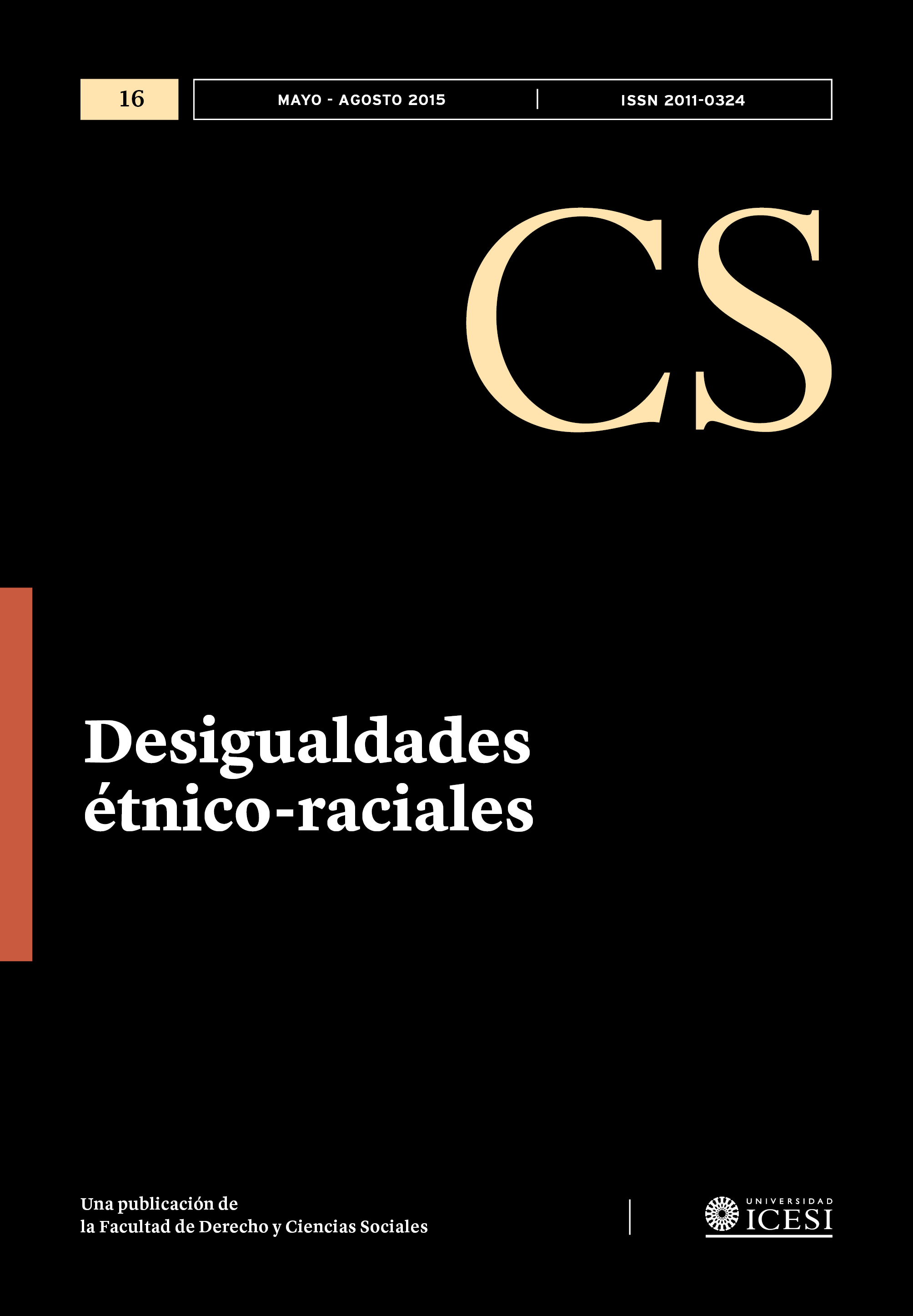And the right to the city? Approaches to racism, patriarchal domination and feminist strategies of resistance in Cali, Colombia
DOI:
https://doi.org/10.18046/recs.i16.1987Keywords:
Patriarchal domination, Interseccionalities, Racial relations, Black women’s resistance, Right to the cityAbstract
This article seeks to give visibility to some spatial strategies of resistance developed by black women in the predominantly black district of Aguablanca District (DA), in eastern Cali, Colombia, against the systematic violence they are daily subjected to. We contextualize their practices within the systematic violence of displacement, paramilitaries terror and spatial segregation in the city. It also seeks to discuss how black women resist stigma, political marginalization and death in a city divided along racial and gender lines. The questions that guide this article are: What is the role of racism and patriarchal domination in the production of "geographies of violence" in Cali? What are the strategies of resistance developed by black women in these topographies of violence? Ultimately, the article seeks to fulfill a gap in academic discourses that silence on black women’s social suffering and that regard them as disorganized, a-political and passive victims.Downloads
References
Alves, Jaime (2014). “From Necropolis to Blackpolis: Necropolitical Governance and Black Spatial Praxis in São Paulo, Brazil”. Antipode, 46(2), 323-339.
Arboleda, Santiago (2007). Conocimientos ancestrales amenazados y destierro prorrogado: la encrucijada de los afrocolombianos. Bogotá, Universidad Nacional de Colombia.
Arboleda, Santiago. (1998). Le dije que me esperara y Carmela no me esperó. El Pacifico en Cali. Universidad del Valle. Cali, Colombia
Carneiro, Sueli, y Cristiane, Cury. (1990) "O poder feminino no culto aos orixás." Revista de Cultura Vozes, pp 157-79.
Collins, P. H. (1999). Black feminist thought: Knowledge, consciousness, and the politics of empowerment. Routledge.
Deávila, O. (2008). Construyendo sospechas: imaginarios del miedo, segregación urbana y exclusión social en Cartagena 1956-1971. Cuadernos de Literatura del Caribe e Hispanoamérica, 7, 35-50.
Harvey, D. (2003). “The right to the city”. International Journal of Urban and Regional Research, 27(4), 939-941.
Lefebvre, H. (1969). “El derecho a la ciudad”. Edicion 62 S.S. Barcelona, España
Lugones, M. (2011). “Hacia un feminismo descolonial”. En La manzana de la discordia. 6(2), 105-119.
Posso, J. (2008). “Mecanismos de discriminación étnico-racial, clase social y género: la inserción laboral de mujeres negras en el servicio doméstico de Cali”. Pobreza, exclusión social y discriminación étnico-racial en América Latina y el Caribe, pp. 215-240.
Veena, Das. 2001. Lenguajes, Subjetividades y Experiencias de Violencia. Pag. 14- 21.
Vergara Figueroa, Aurora. 2011. Ripped from the Land, Shipped Away and Reborn: Unthinking the Conceptual and Socio-Geo-Historical Dimensions of the Massacre of Bellavista. [Masters Theses]. Paper 570. Consulta realizada desde: http://scholarworks.umass.edu/theses/570
Webgrafía
Brah, A. (2013). Pensando en y a través de la interseccionalidad. Lateinamerika-Institut der Freien Universität Berlin. http://www.academia.edu/6444540/Interseccionalidad_y_diversidad._En_defensa_de_un_modelo_de_analisis_categorial_no_opresivo_que_respeta_la_diferencia (Consultado el 27 de febrero de 2015).
Curiel, O. (s.f.). Género, raza, sexualidad; debates contemporáneos.
http://www.urosario.edu.co/urosario_files/1f/1f1d1951-0f7e-43ff-819f-dd05e5fed03c.PDF (Consultado el 20 de febrero de 2015).
El Espectador (2014). “¿Cuál es la cuidad con más empleadas domésticas internas en Colombia?”. En El Espectador. http://www.elespectador.com/noticias/infografia/cual-cuidad-mas-empleadas-domesticas-internas-colombia-articulo-493159 (Consultado el 20 de febrero de 2015).
Urrea, F. et. al. (2011). Pobreza y exclusión social en Cali. Un análisis de los hogares y la población de sectores populares y clases medias bajas a través del SIISAS 2009.
http://planeacion.cali.gov.co/Publicaciones/Inclusion%20social/Pobreza%20y%20exclusion%20social%20en%20Cali.pdf (Consultado 2 de mayo de 2015).
Downloads
Published
Issue
Section
License
Copyright (c) 2015 Vicenta Moreno Hurtado, Debaye Mornan

This work is licensed under a Creative Commons Attribution-NonCommercial 4.0 International License.
© Reserved Copyright
Material in this publication may be reproduced without authorization, provided the title, author and institutional source is acknowledged.
The content published in Revista CS is distributed under the Creative Commons BY-NC 4.0 Attribution/Recognition-NonCommercial 4.0 International license.
You are free to:
Share — copy and redistribute the material in any medium or format.
Adapt — remix, transform, and build upon the material.
Under the following terms:
Attribution — You must give appropriate credit , provide a link to the license, and indicate if changes were made . You may do so in any reasonable manner, but not in any way that suggests the licensor endorses you or your use.
NonCommercial — You may not use the material for commercial purposes.












